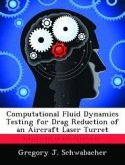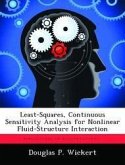Using the commercially available FLUENT 3-D flow field solver, this research effort investigated vortex breakdown over a delta wing at high angle of attack (a) in preparation for investigation of active control of vortex breakdown using steady, alongcore blowing. A flat delta-shaped half-wing with sharp leading edge and sweep angle of 60 [degrees] was modeled at a = 18 [degrees] in a wind tunnel at Mach 0.04 and Reynolds number of 3.4 x 10 5. A hybrid (combination of structured and unstructured) numerical mesh was generated to accommodate blowing ports on the wing surface. Results for cases without and with along-core blowing included comparison of various turbulence models for predicting both flow field physics and quantitative flow characteristics. FLUENT turbulence models included Spalart-Allmaras (S-A), Renormalization Group k-e, Reynolds Stress (RSM), and Large Eddy Simulation (LES), as well as comparison with laminar and inviscid models. Mesh independence was also investigated, and solutions were compared with experimentally determined results and theoretical prediction. These research results show that, excepting the LES model for which the computational mesh was insufficiently refined and which was not extensively investigated, none of the turbulence models above, as implemented with the given numerical grid, generated a solution which was suitably comparable to the experimental data. Much more work is required to find a suitable combination of numerical grid and turbulence model.
Hinweis: Dieser Artikel kann nur an eine deutsche Lieferadresse ausgeliefert werden.
Hinweis: Dieser Artikel kann nur an eine deutsche Lieferadresse ausgeliefert werden.








